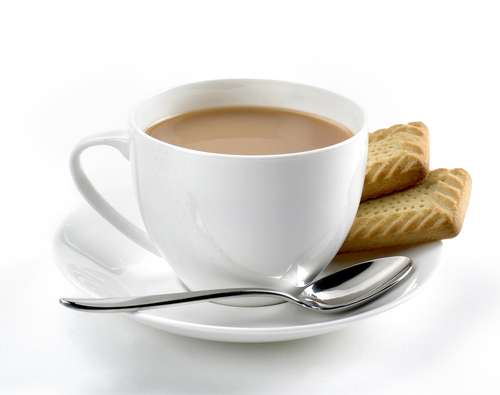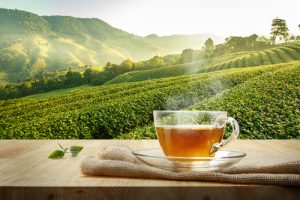
How did ‘tea’ become Britain’s favourite hot drink?

Image credit: DONOT6_STUDIO/Shutterstock.com
There has been a spectacular rise in the consumption of coffee in the UK over the past two decades. However, tea is still the nation’s favourite hot beverage. As a country, we consume an unbelievable 100 million cups of tea every single day. This is an average of 2 cups per day across the entire adult population. Have you ever wondered how the British became a nation of such prolific tea drinkers?
The Origins of Tea Drinking
The earliest reference to anyone drinking tea emanates from China. Folklore has it that in 2737 BC a dead leaf from a tea bush fell into the water being boiled for Emperor Shen Nung. The emperor is said to have found the taste refreshing. In effect, he had just drunk the world’s first cup of tea.
By the time of the Tang Dynasty (618–907 AD), tea drinking had become a widespread custom throughout China. In 1193, Japanese Buddhist monk, Eisai (Yosai), returned to his home country after spending 25 years in China. He introduced tea to Japan, where it was instantly welcomed into the culture. Enamored by the beverage, the nation went on to create the now-famous Japanese tea ceremonies.
In Europe, it was the Portuguese who first discovered tea. It was missionaries and merchants who first brought it back home from Asia. However, it was the Dutch who first saw the drink’s great commercial potential. In 1606, they began shipping tea from China to Holland, via Java. However, tea remained incredibly expensive for a good many years. Thus, it was only society’s elite who could afford the pleasure of tea drinking.
Tea comes to Britain
The British did not immediately take to drinking the strange new brew when it was first introduced in the early 1600s. Coffee houses were still relatively new and the hot beverage was cheaper than tea. It wasn’t until 1662, when Charles II married the Portuguese princess, and tea lover, Catherine of Braganza, that the beverage began to find favour. She introduced it to her new court, drinking tea quickly became the thing to be seen to be doing amongst the privileged.
In 1664, the East India Company began importing huge amounts of Chinese tea from Java into Britain. The trading giant more or less had a monopoly on the market and was to generate enormous profits. The British government also saw the chance to impose high taxes on a product that was considered a luxury. This encouraged the growth of the tea smuggling industry which eventually outgrew the legal trade by more than a good margin. In 1784, Prime Minister, William Pitt the Younger, slashed the tea tax from 119 percent to 12.5 percent.
This move end the UK’s problem with the smuggling of tea. However, in 1839, a new tea crisis began for the British government. This is when the First Opium War with China began. The British were by now buying tea from China and selling opium in return. The Chinese saw this as a blatant attempt to curb their sovereignty and economic power. No longer on good terms with China, Britain expanded its tea-growing operations in the Assam region of India.
Tea for the Masses
From the early 1870s onwards, the supply of tea to Britain increased with the expansion of the railways across its empire. In 1884, the price of the tea dropped markedly due to innovation in the preparation of the commodity. Tea has remained relatively low in price ever since. It was Sir Thomas Lipton who purchased the Ceylon Tea Company in 1890, that brought tea to the masses. He distributed the product not only throughout Britain, but the rest of Europe, and the USA.
Around 1908, Thomas Sullivan, a New York tea merchant, started sending samples of tea in small silken bags to his customers. Some clients assumed that the whole bag was to be put in hot water for use. Hence, the tea bag was born. During the 1920s, the teabag was developed for commercial use. This saw it gradually grow in popularity across the whole of the USA.
By the early 1960s, teabags had still only captured about 3% of the British market. However, mirroring the USA, their use gradually increased in popularity. Today, teabags sales now represent around 96% of the total UK tea market. However, since the early 2000s, herbal teas, including green tea have become increasingly popular. Though, the original black tea still accounts for more than 70% of all tea drunk in the country.
Nationally, China consumes far more tea than any other country with usage at some 730,000 tonnes, annually. However, on a per capita basis, Turkey, Ireland, and the UK are the world’s three biggest tea drinkers.
Header image credit: Chris Baynham/Shutterstock.com
If you’ve enjoyed reading this post, why not check out more of the articles in the series by clicking the following link: Why do we…….?





